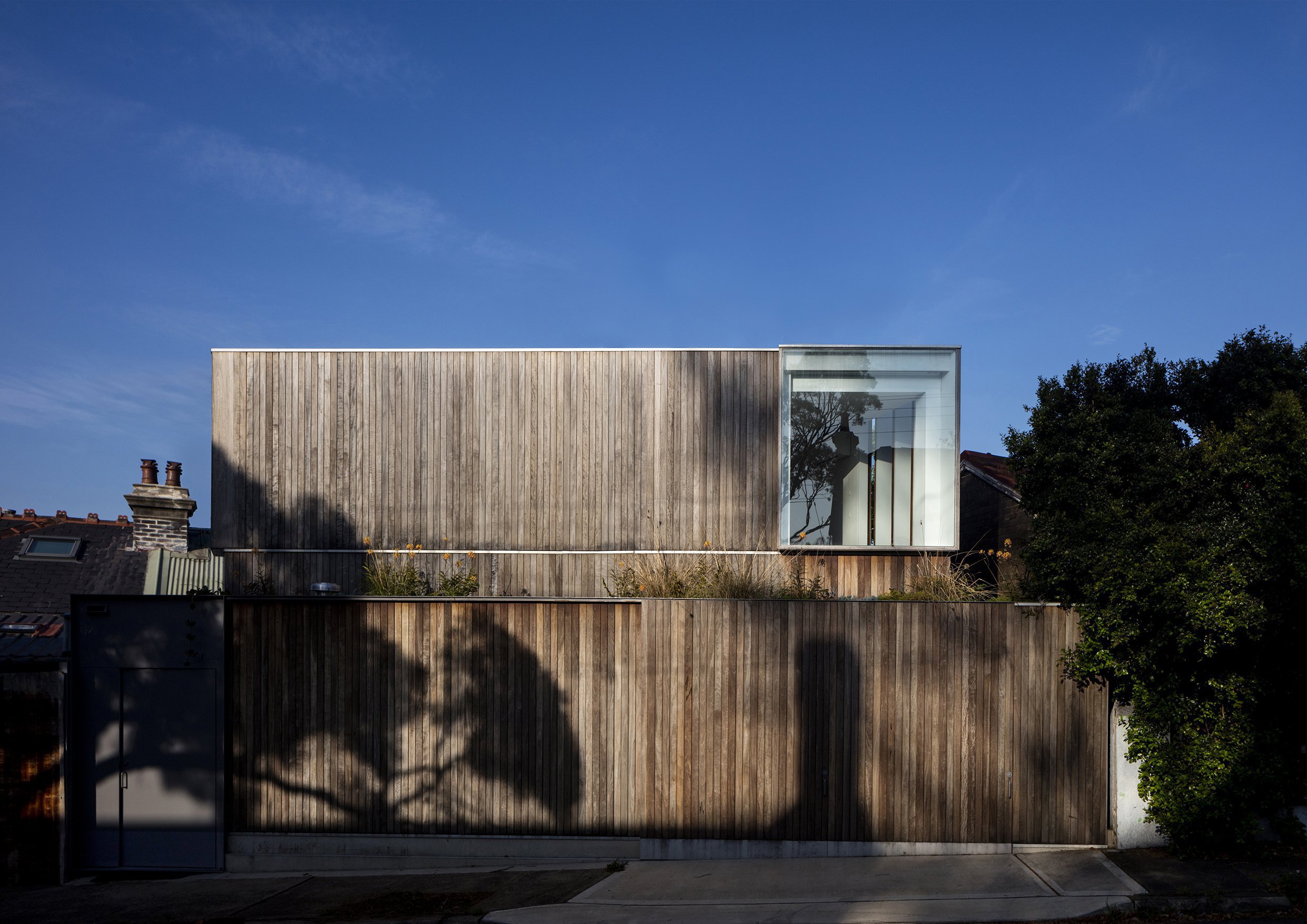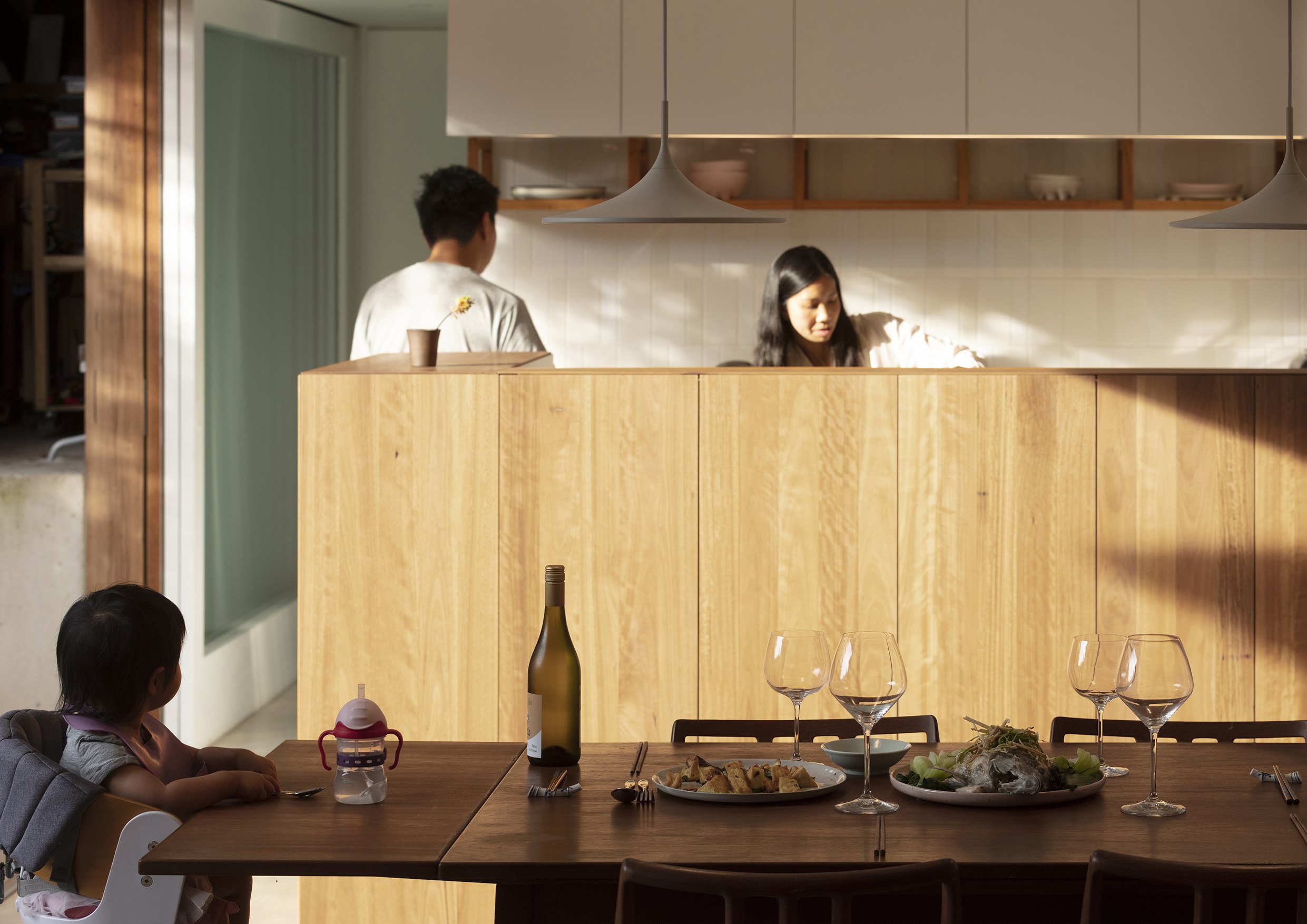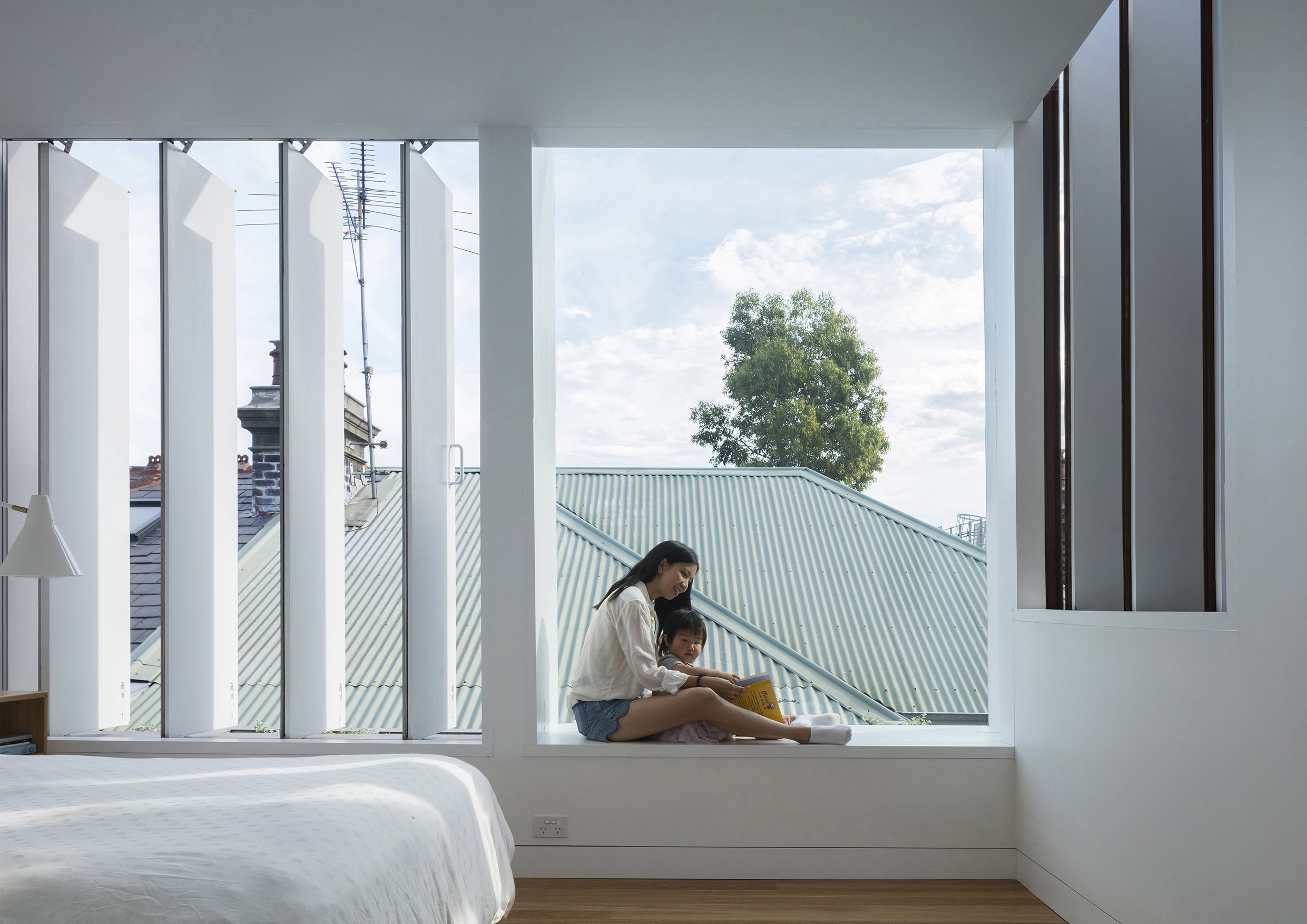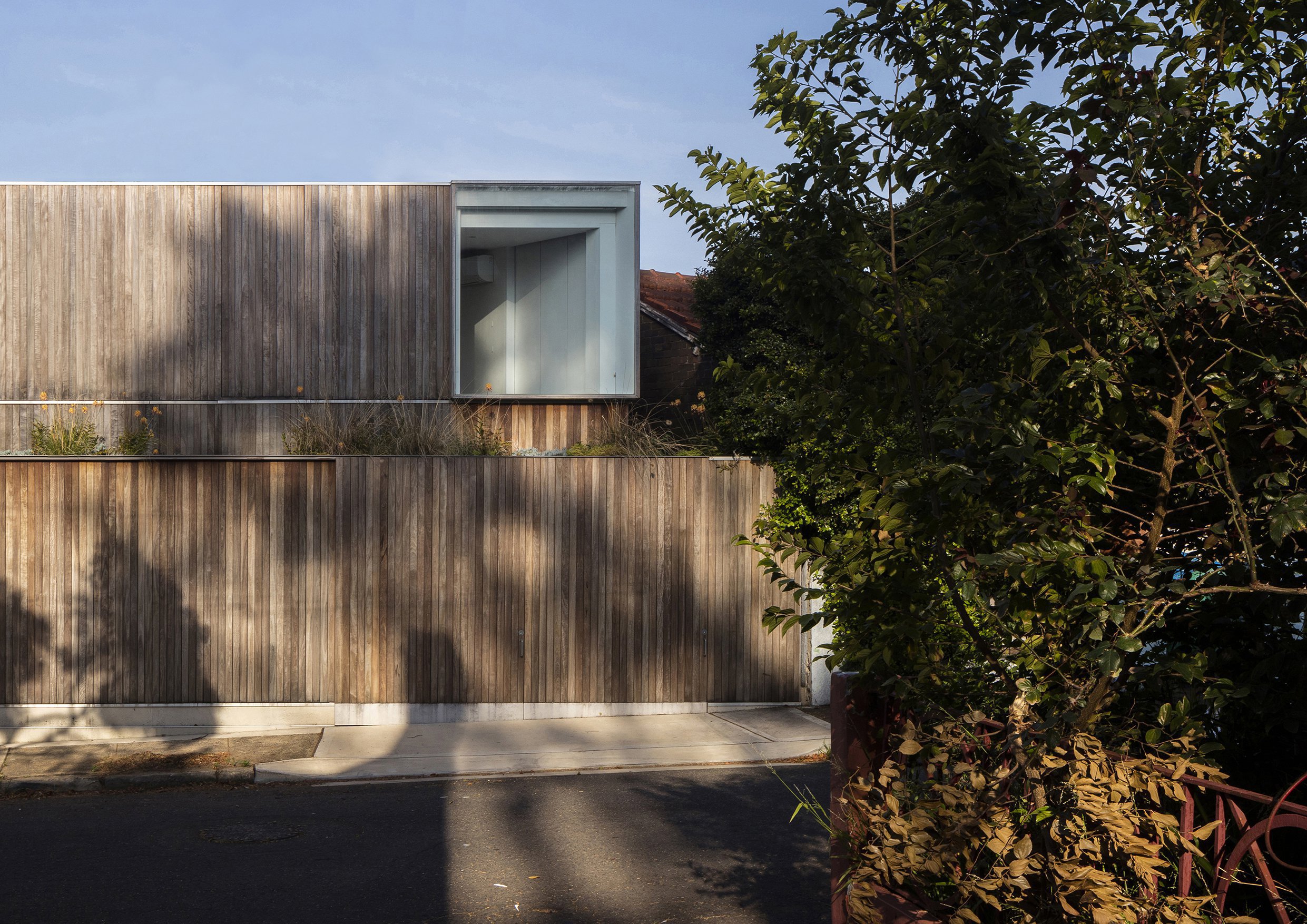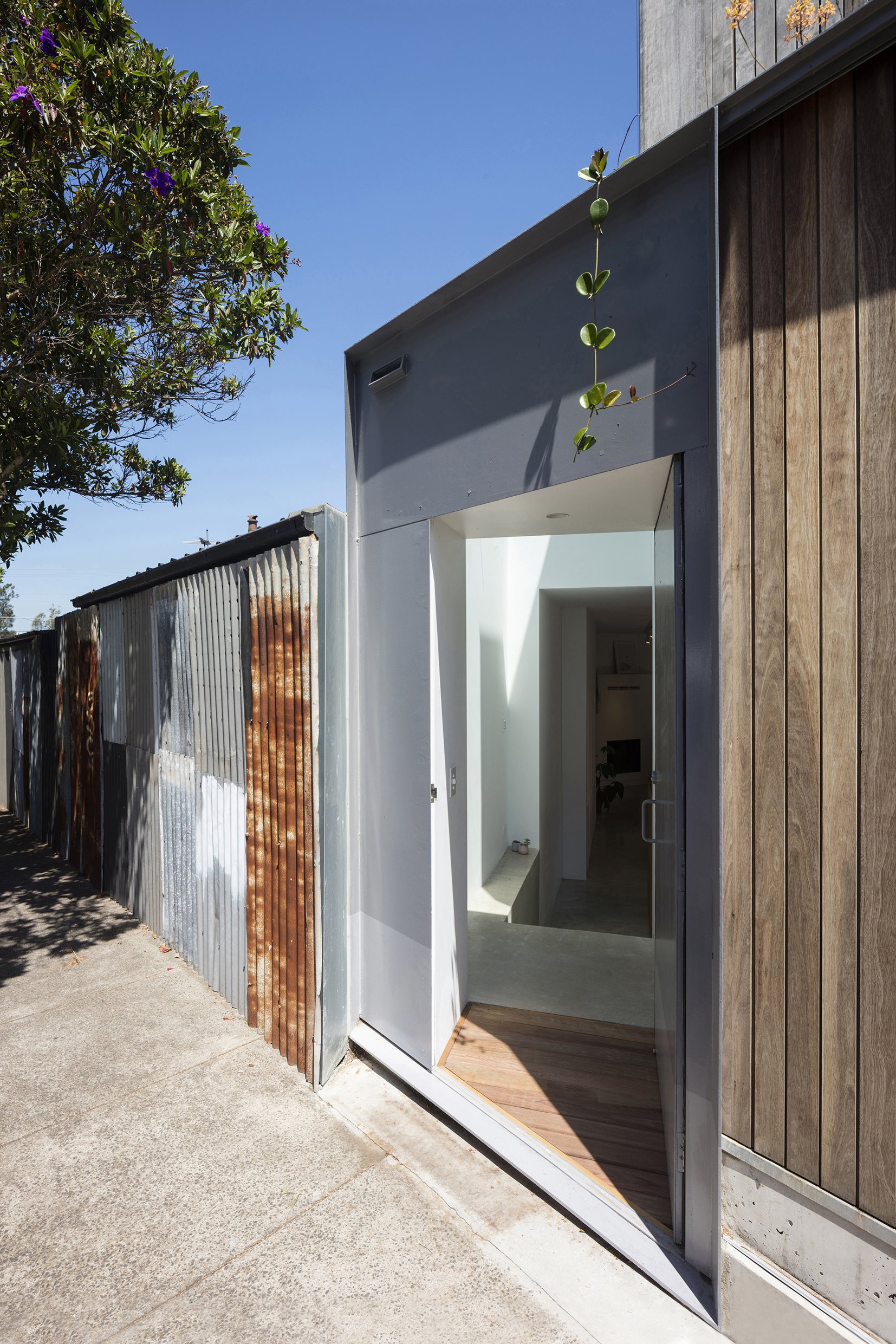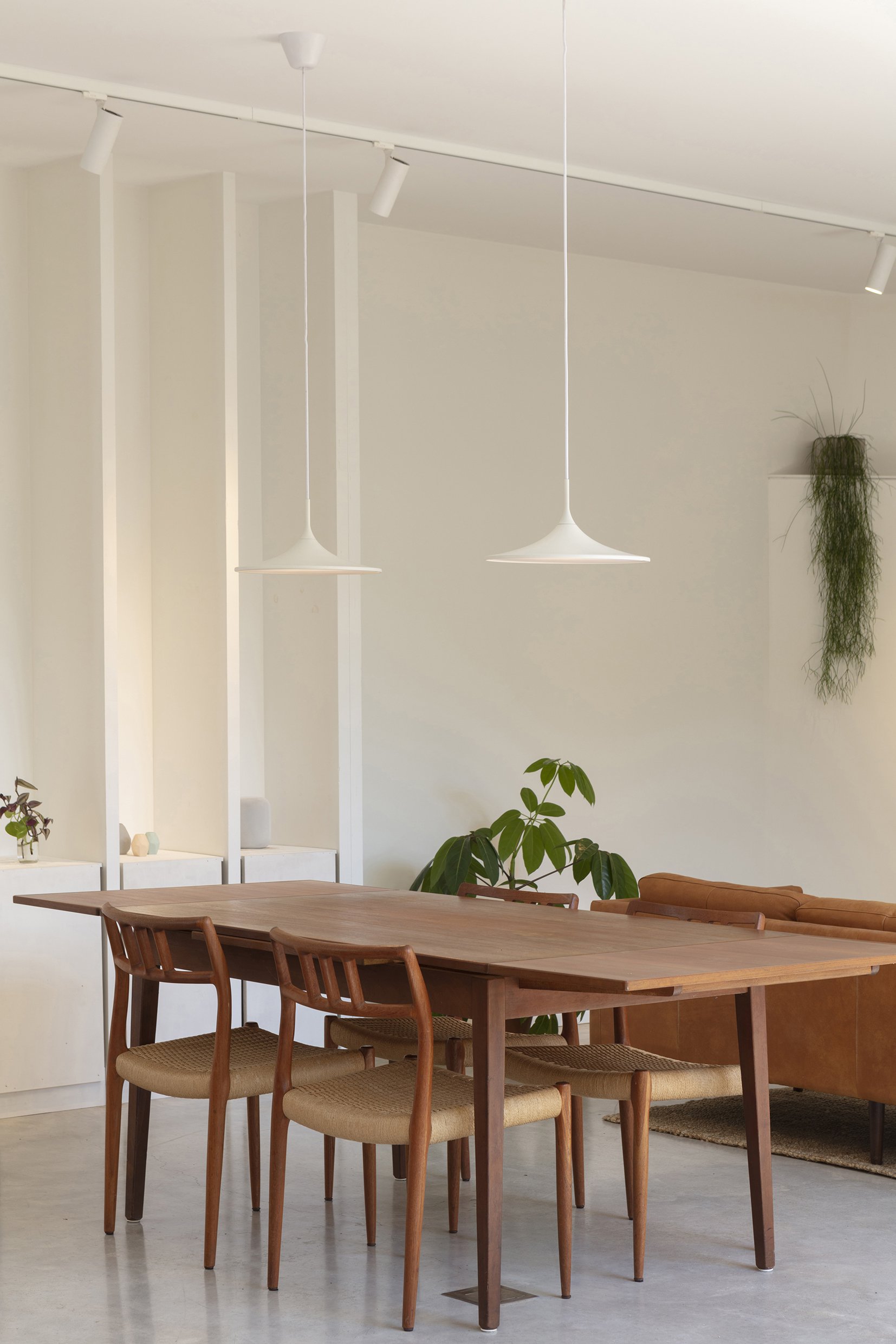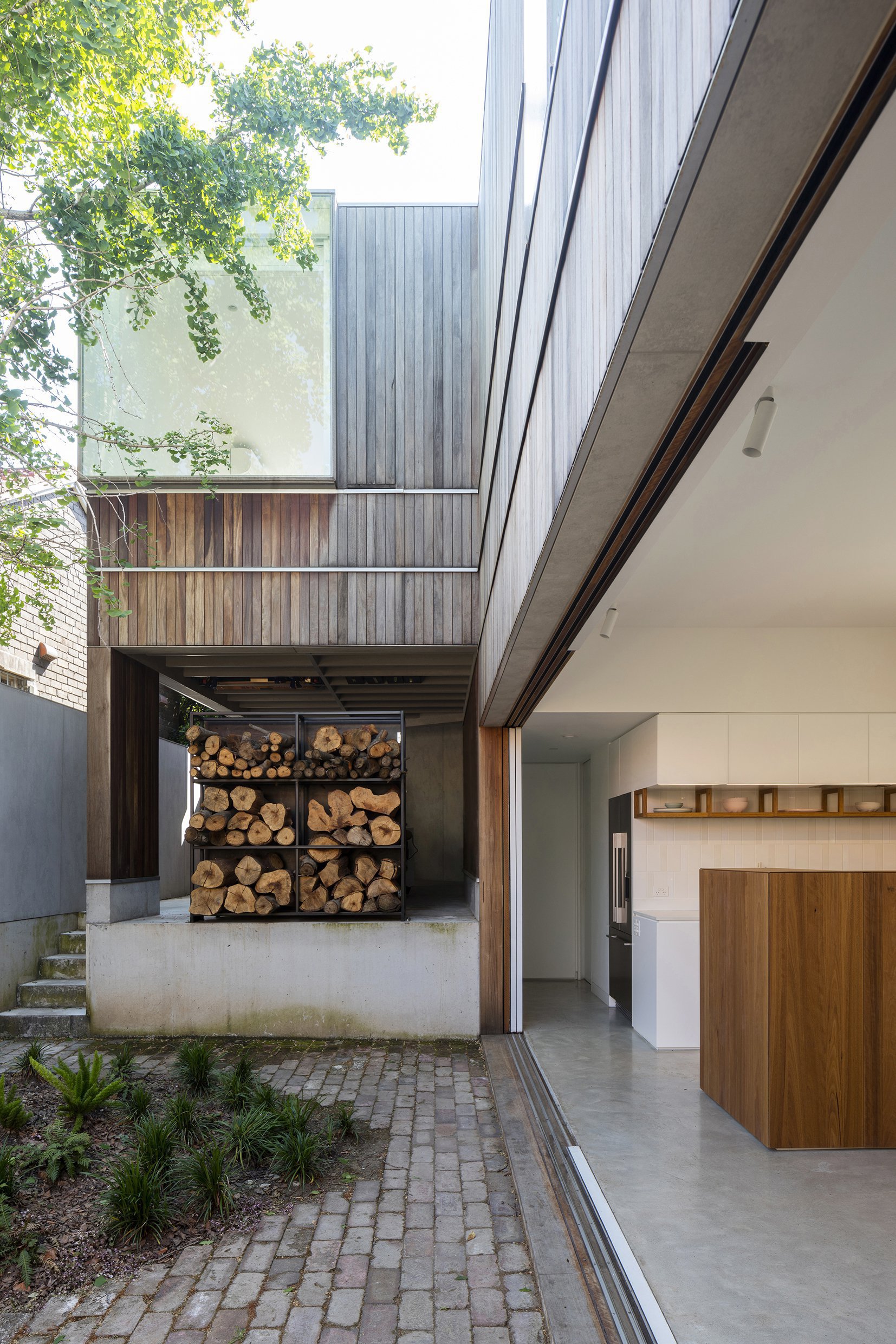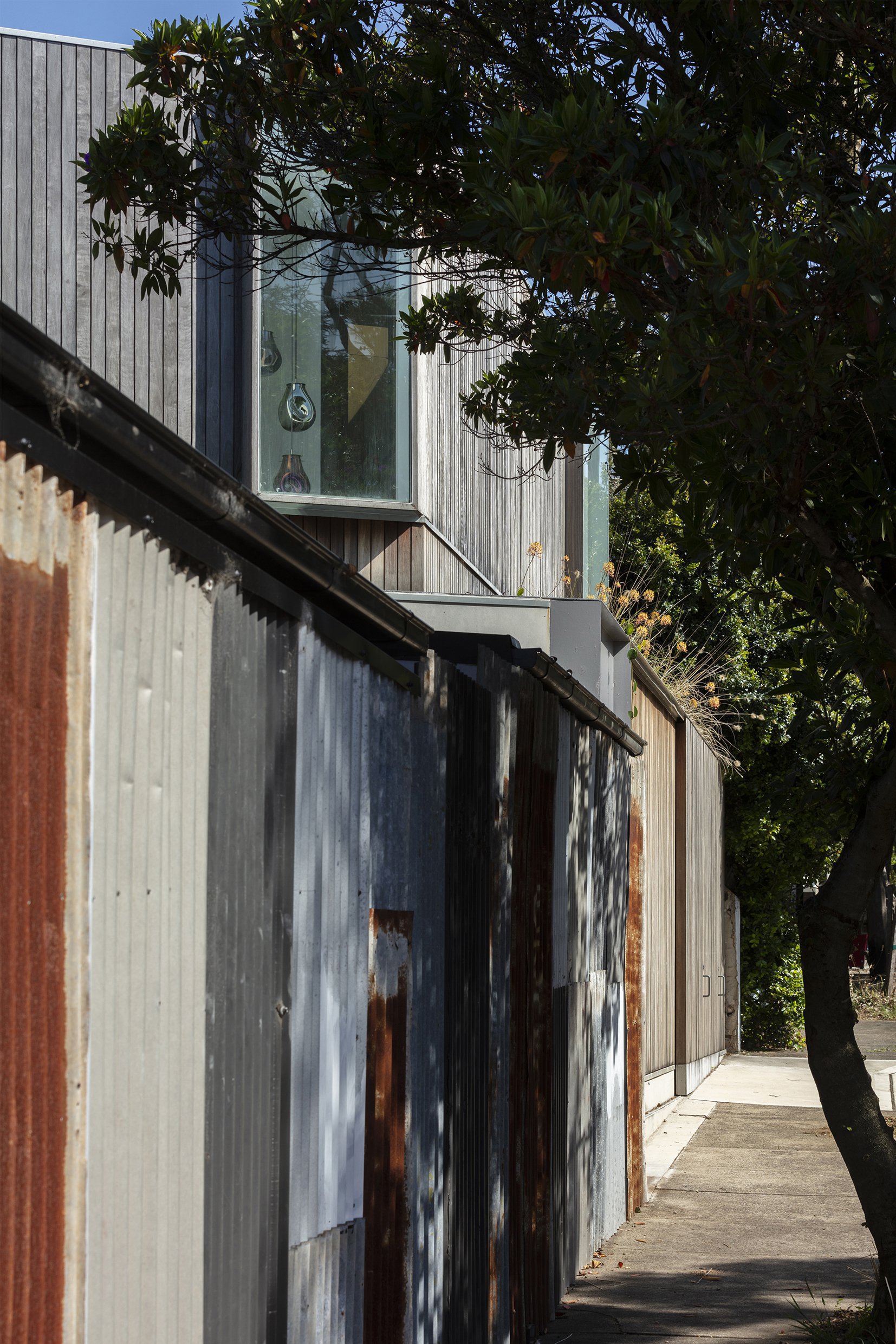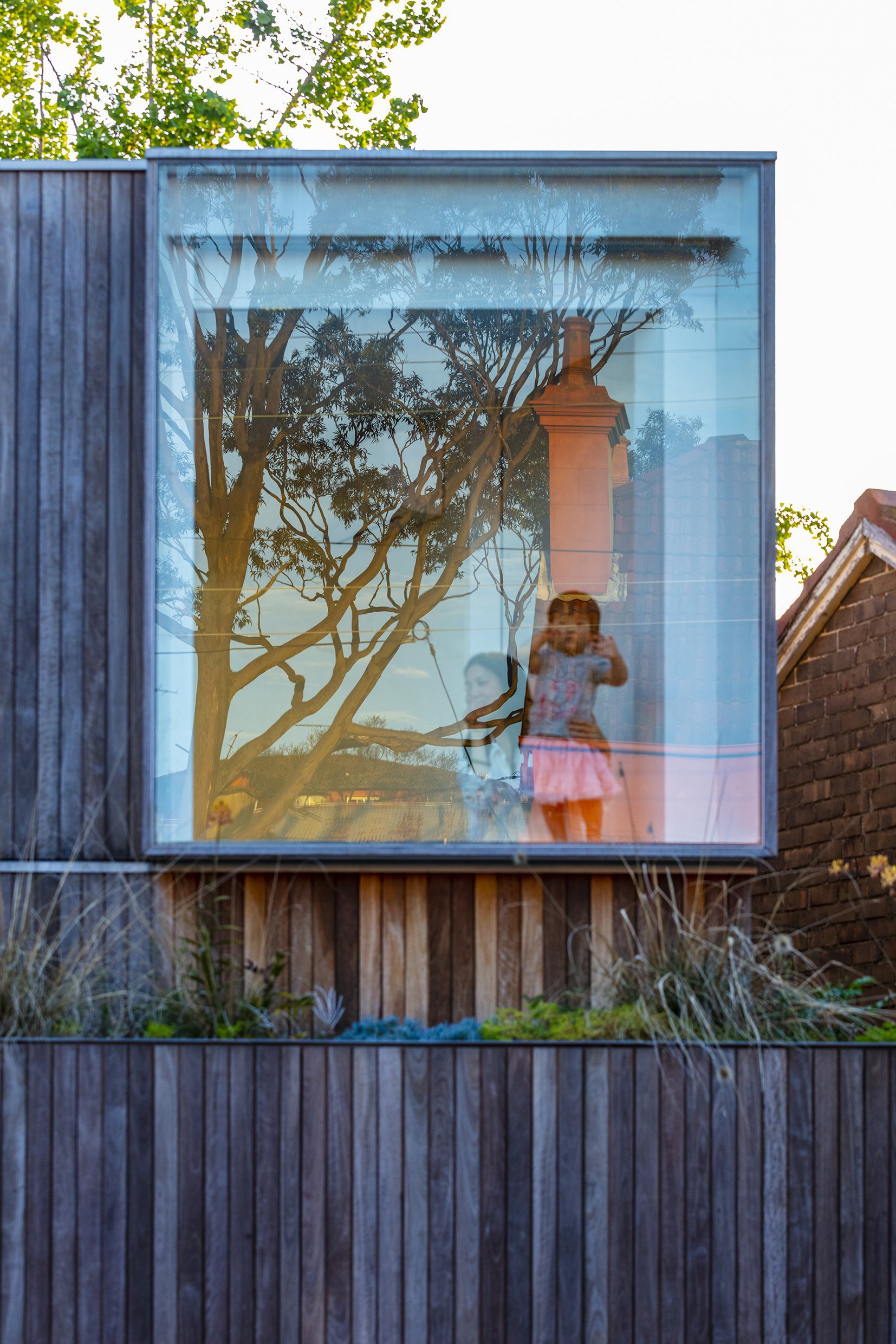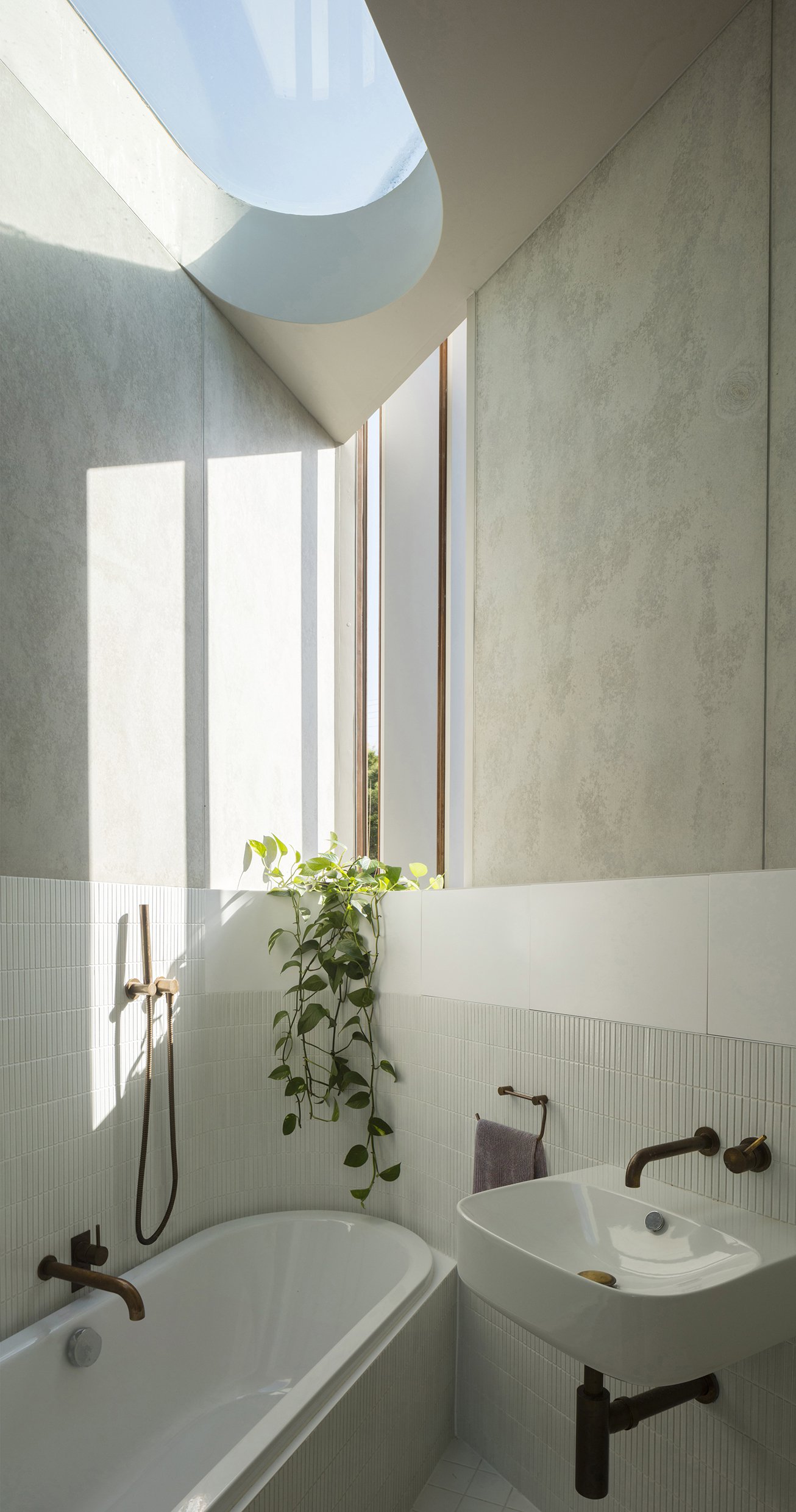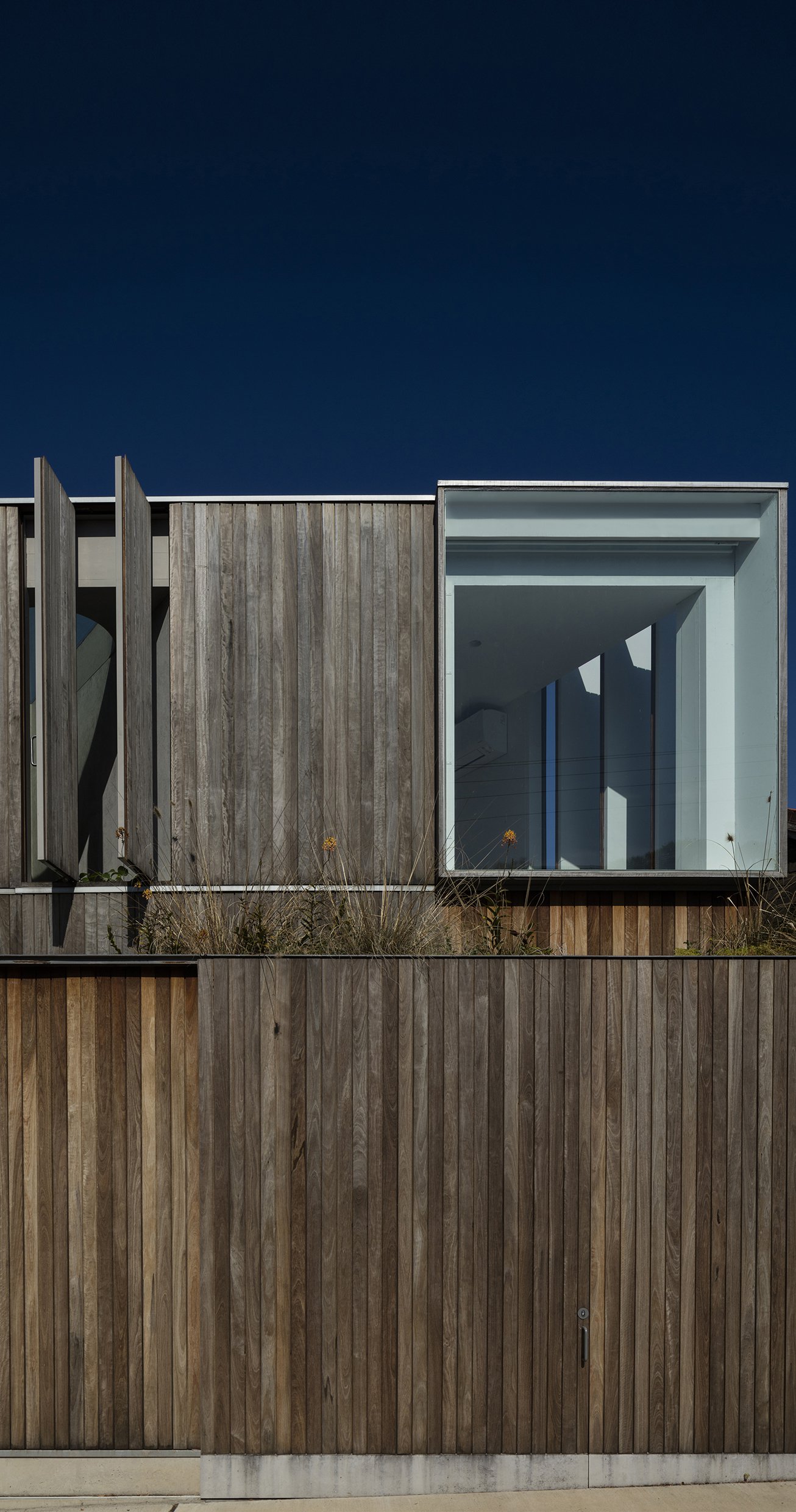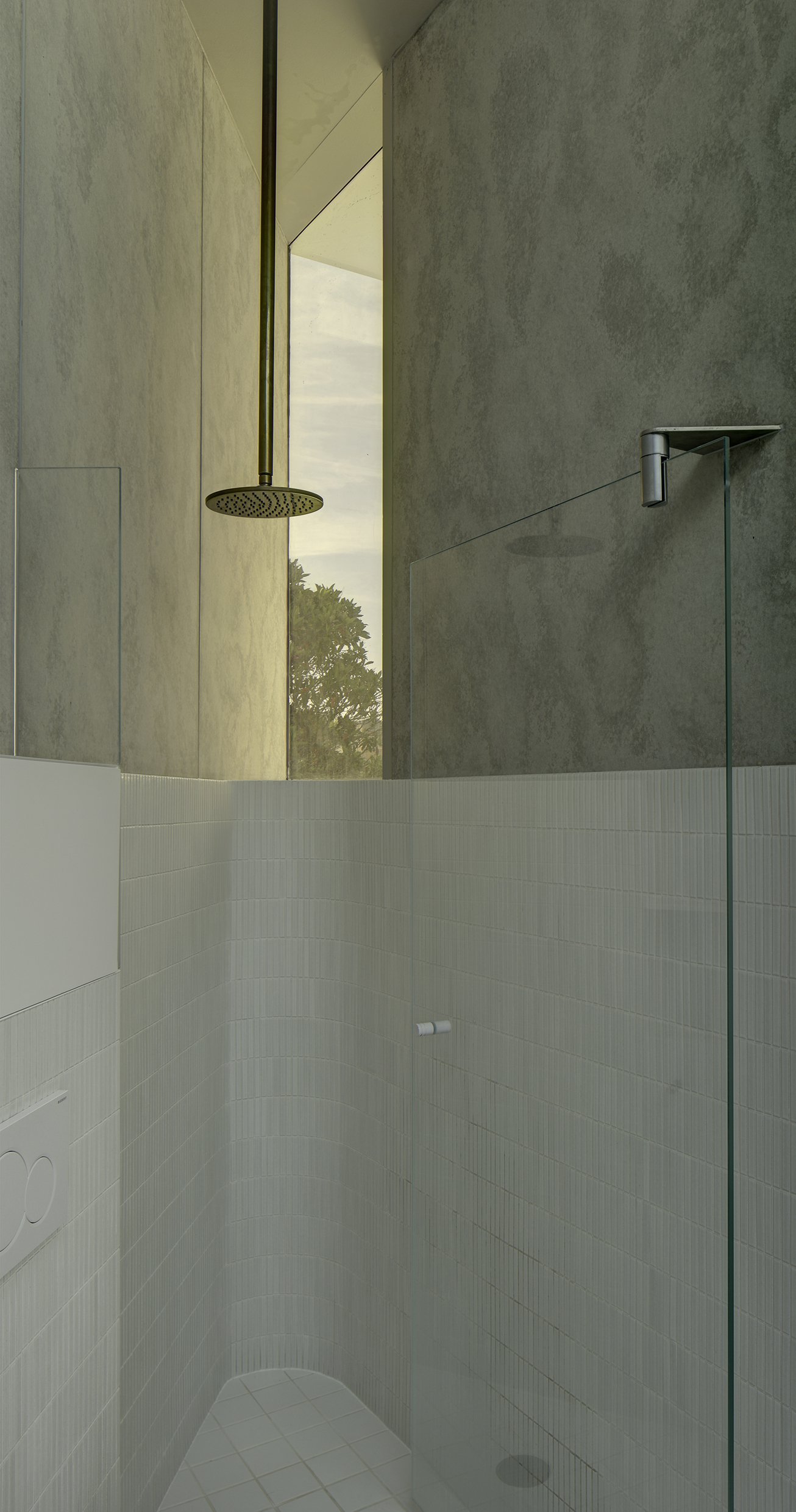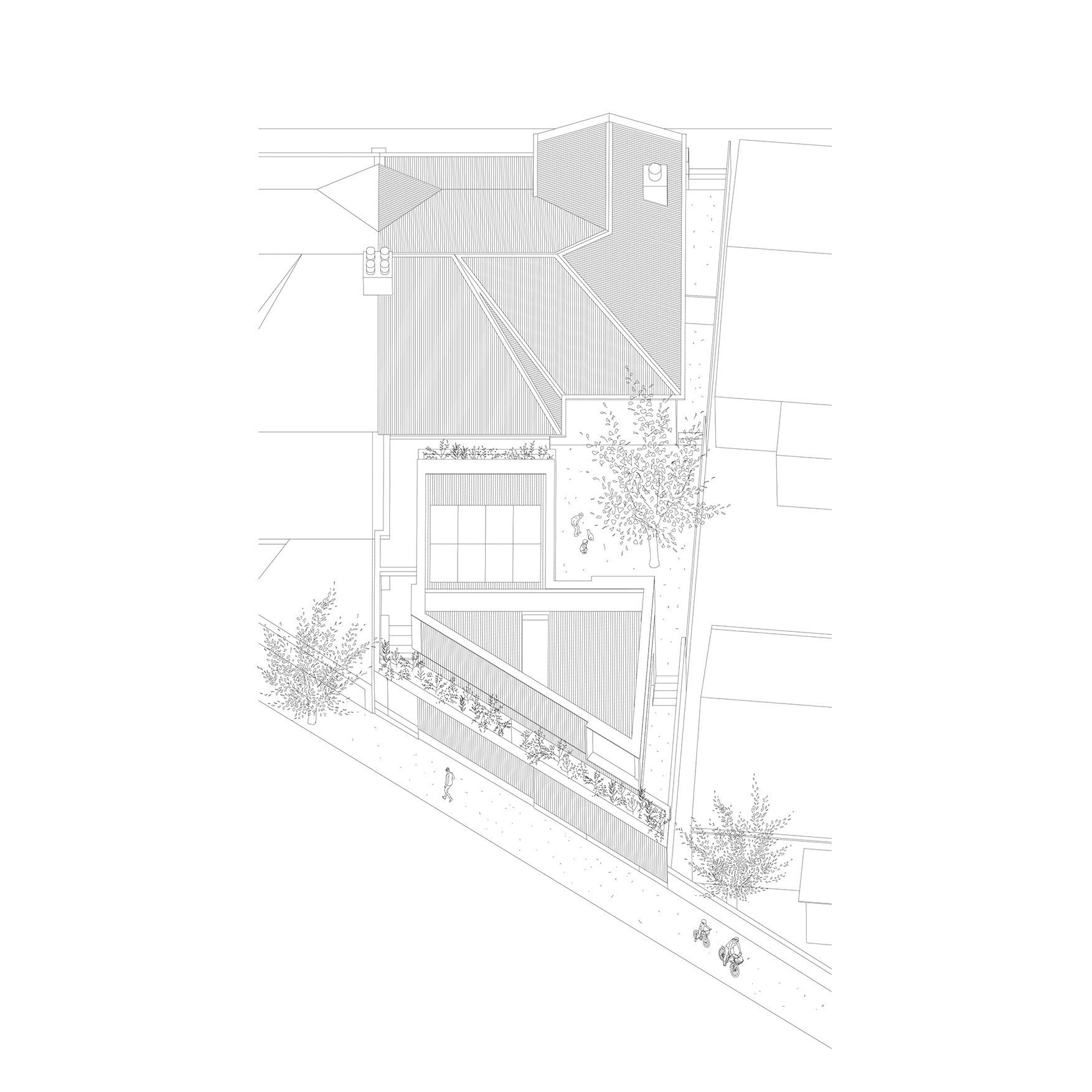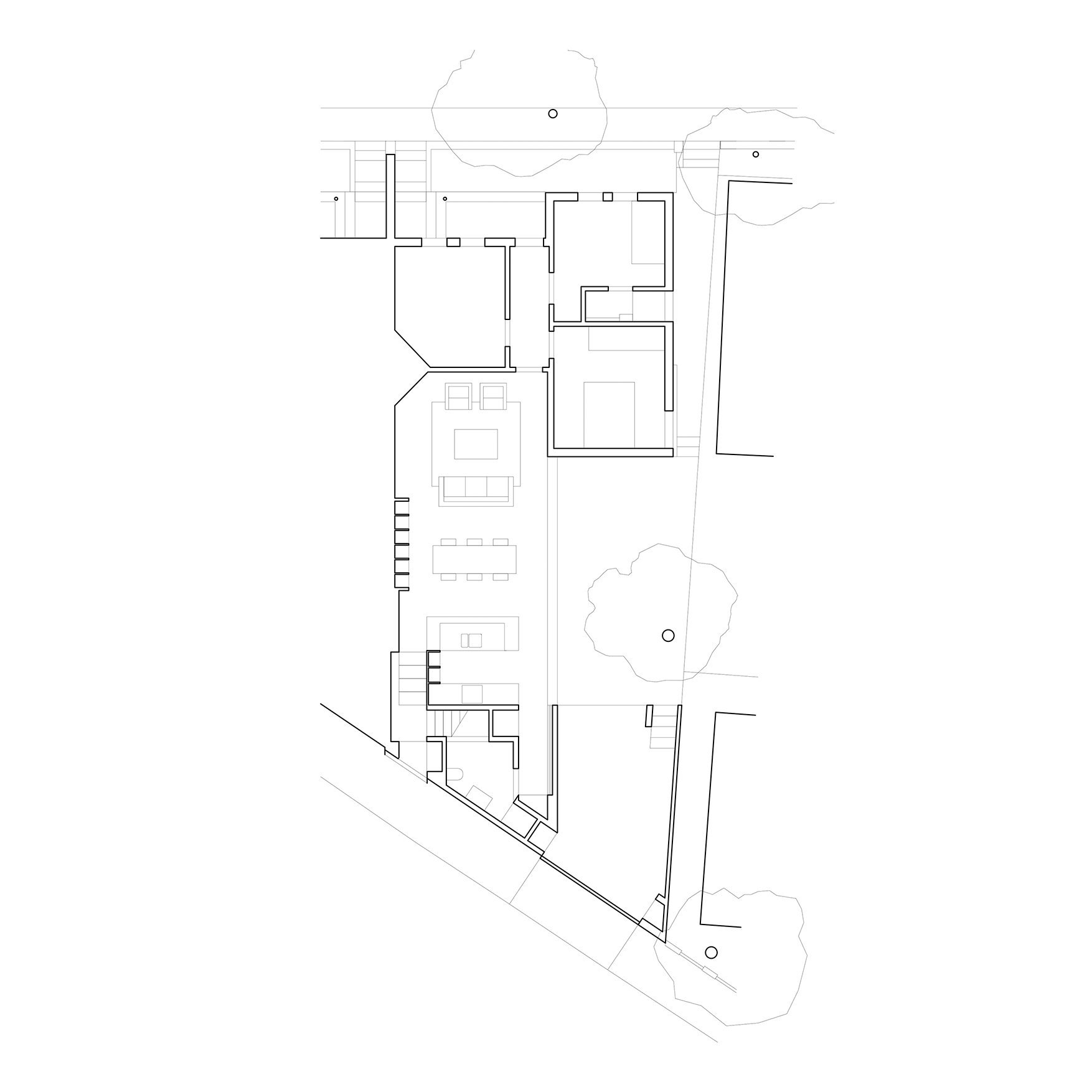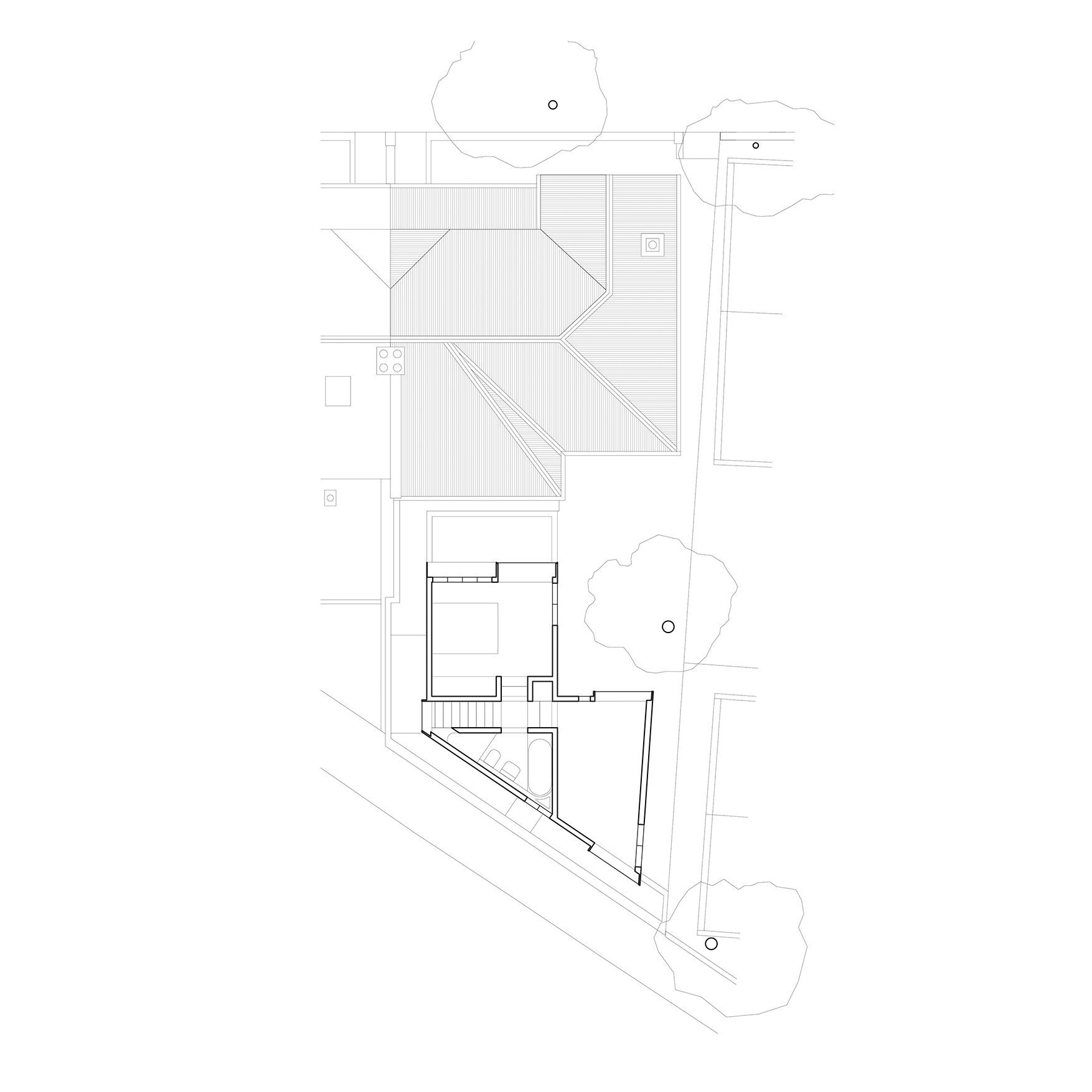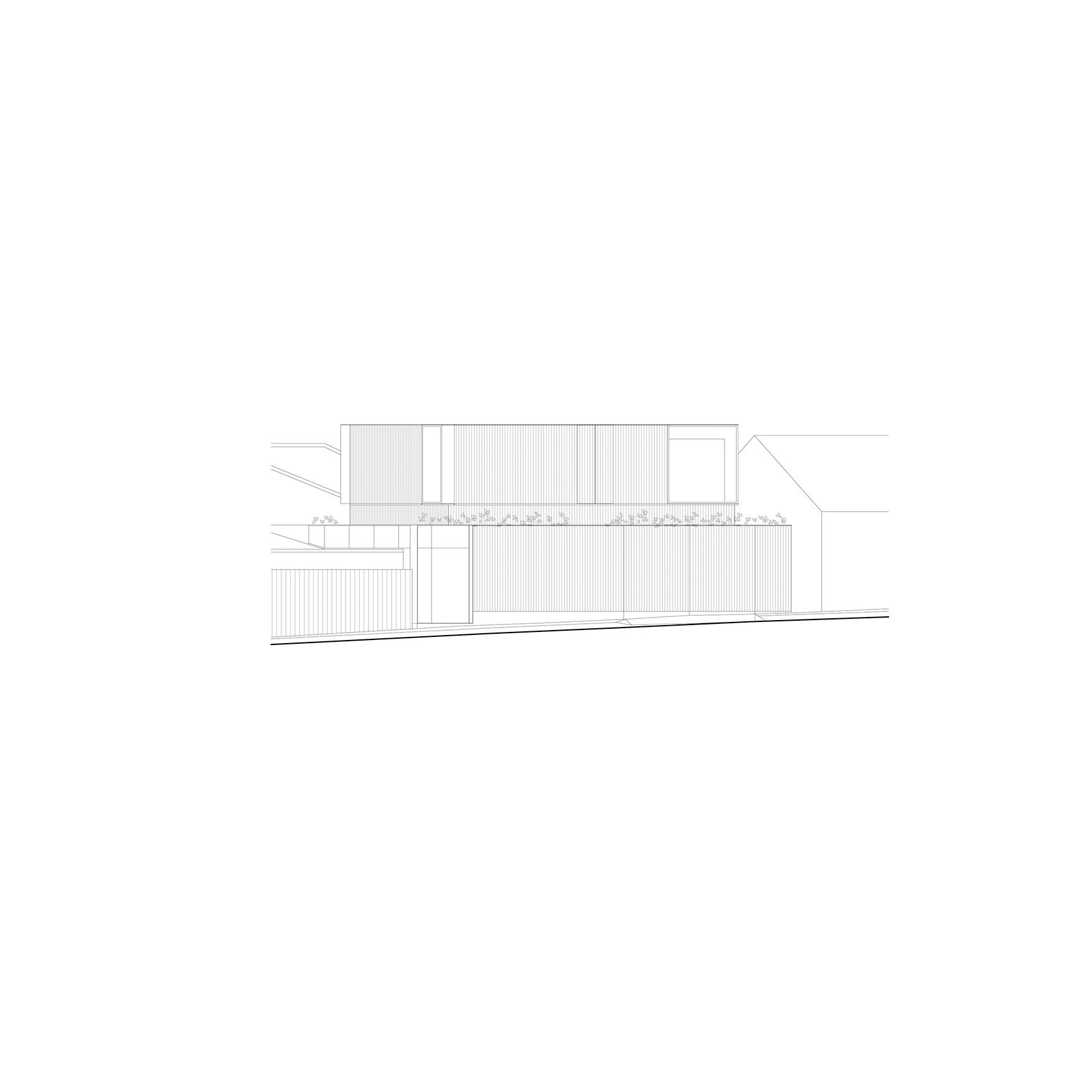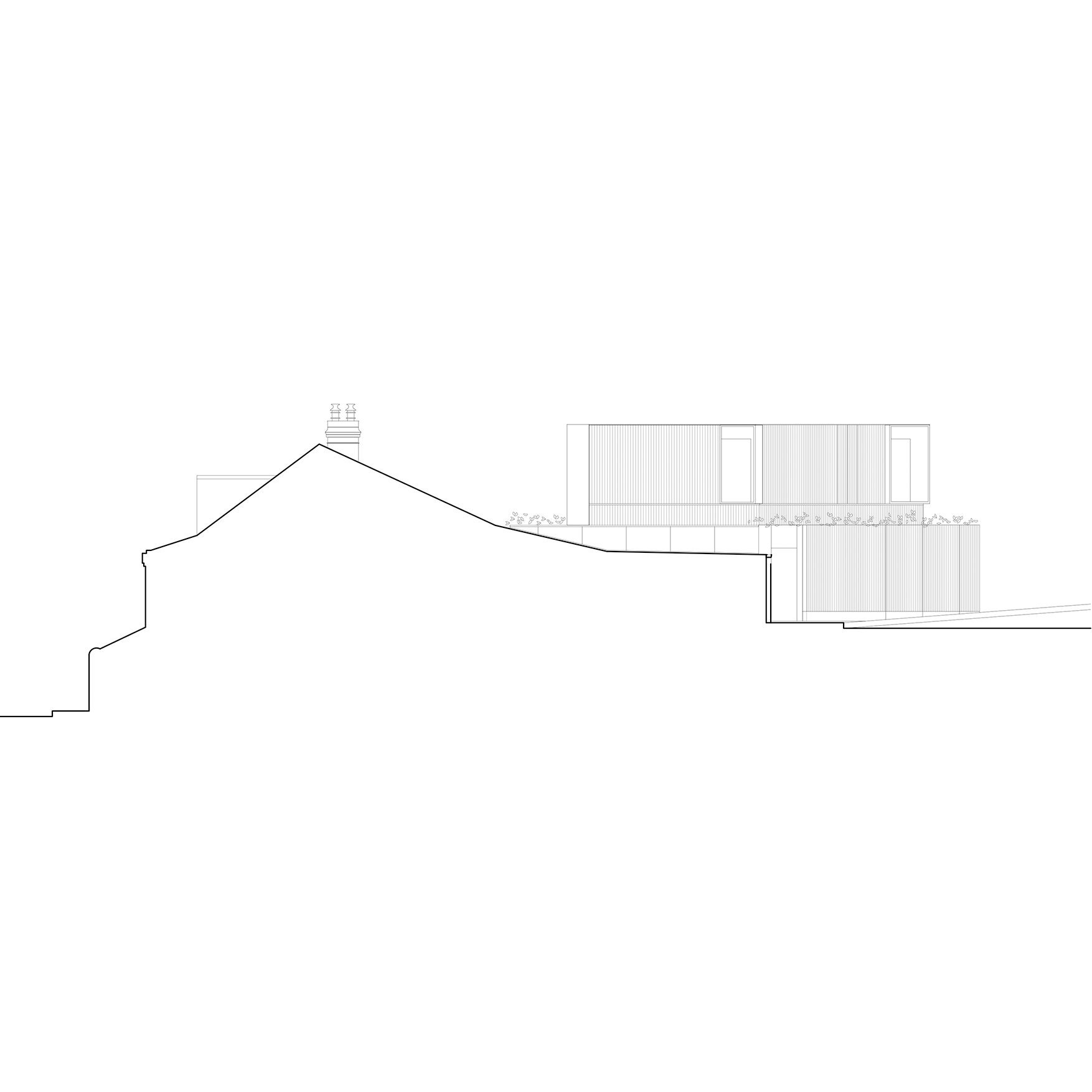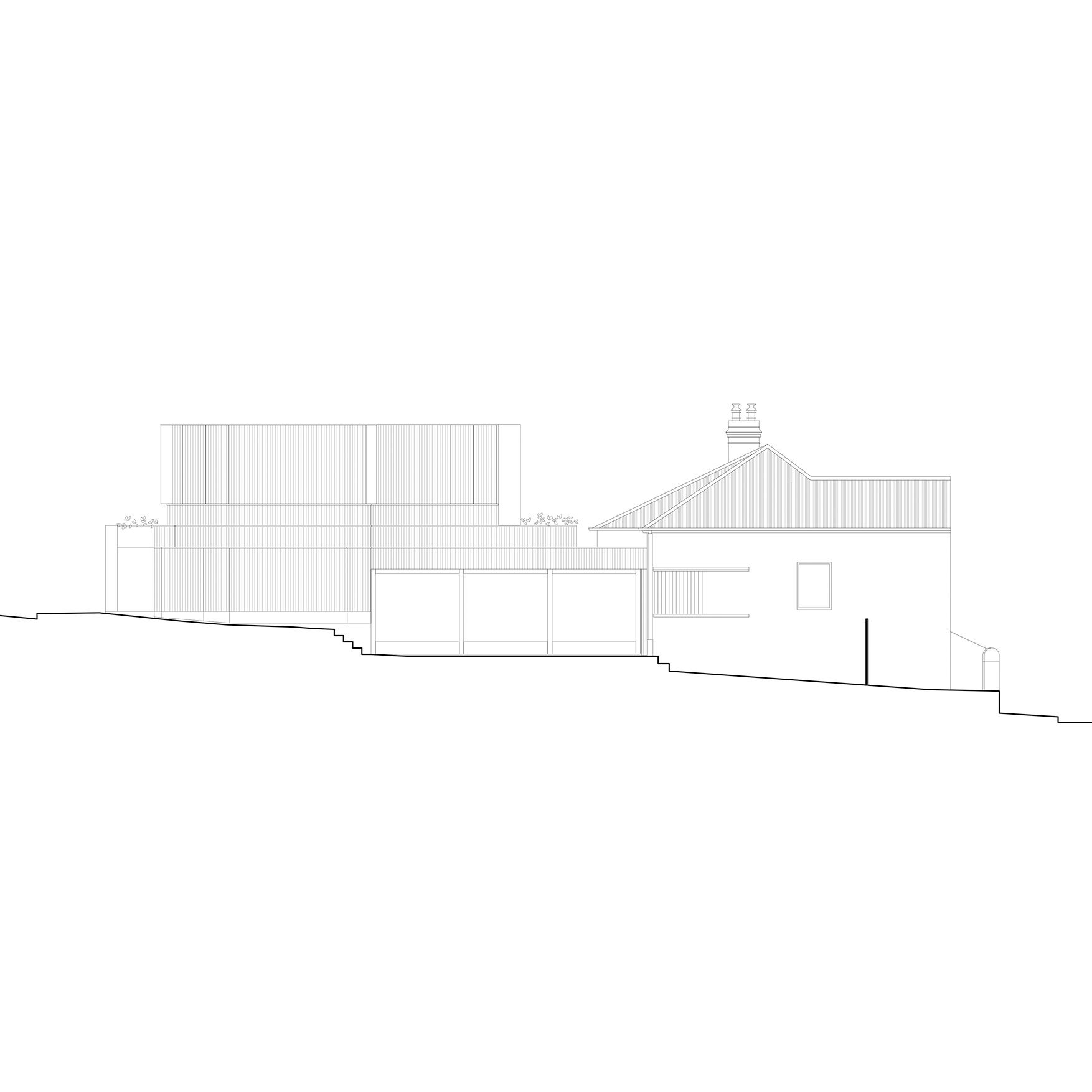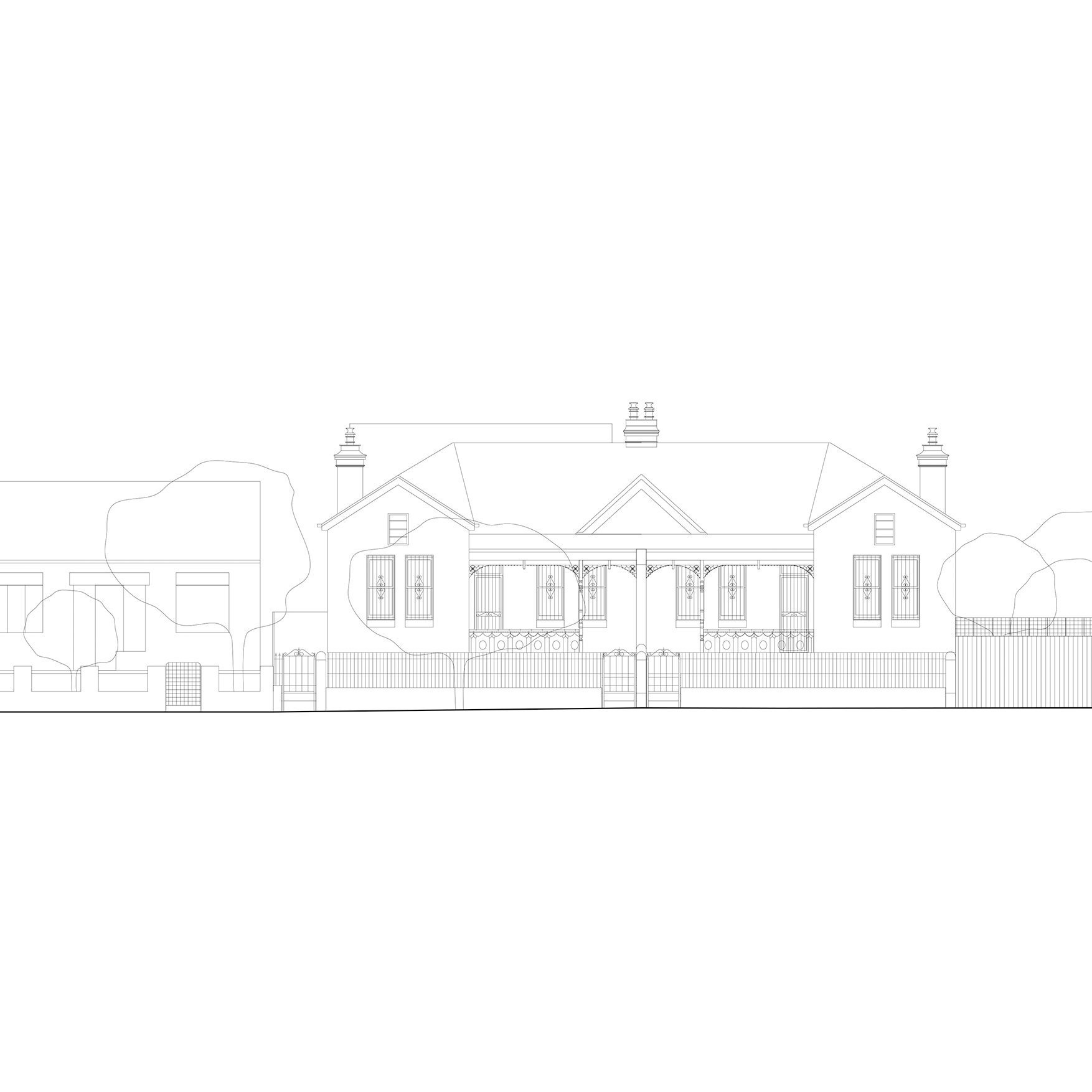Gadigal
Built
Anita Panov, Andrew Scott, Justine Anderson & Josh Sleight
AIA NSW Commendation for Residential Architecture
It is the small details that bring joy - the movement of light and shadow denoting the passage of time; the way we flow from one activity to the next with ease; and the glimpses of a roof garden with the city beyond serving as reminders of our little urban sanctuary.
House Fit was commissioned by a young couple, who is now a young family and who will likely be a larger family, then maybe after a while a couple again, and hopefully eventually they will settle into their dotage together. All the while with the potential for accommodating work, making, guests, tenants, carers, staff and extended family.
We have never been modern and so have eschewed free plan flexibility to instead work at the potential for mutability via the division and amalgamation of rooms. In this project the arrangement of rooms adopt a dumbbell plan comprising three extant rooms fronting one street, a central great communal room and adjacent mirrored outdoor court, and three rooms fronting the second street.
This plan enables different cellular groupings, potentially of households or workplaces, to simultaneously coexist on what was one dwelling plot. As well as spatial flexibility this arrangement suddenly renders what was once a passive investment class, reliant on the vagaries of capital growth, the capacity to operate as a financial mechanism that is profoundly more responsive.
The planning strategy of this project is also to gather the idiosyncratic contextual geometry into the interior spaces, subverting the suburban figure ground, to establish space external to the building that is regular in shape and of extreme utility. While this fundamentally repositions the project as urban, it also establishes a form and interiors that offer two angles. The orthogonal and the oblique, enabling an intermittent perceptual dynamism to emerge via alternate elongating and foreshortening.
In a wider sense House Fit is a model for mutable habitation, for an expanded notion of family and co-habitants, for bringing production back to our suburbs, for ageing in place and for the flexible financial leveraging of the largest asset most of us will ever own.
